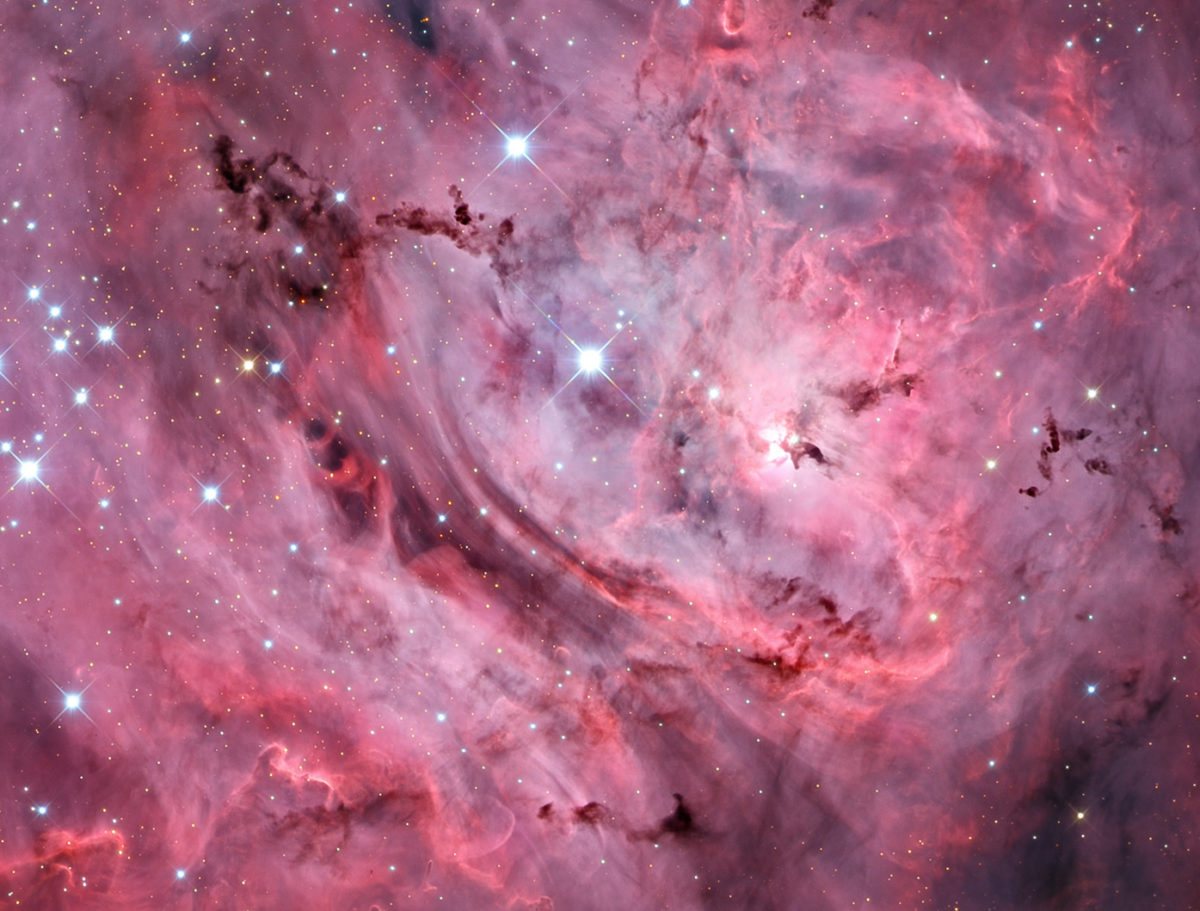Adam Block • Aug 21, 2015
Pretty Pictures of the Cosmos: Long Exposures
This nebula surrounds star 22 Scorpii and is part of the colorful Rho Ophiuchi Complex. At magnitude 4.8 the star can be seen near Antares under a dark sky. However, both this nebula and the other nearby features require long exposures to reveal the true nature of what is in this part of the sky:

Some sources indicate this star does not release enough energy to ionize the surrounding gas and make it glow red—and so the nebula is bluish due to the scattered light from dust. However, this deep image hints that there exists some extremely faint ionization (red) near the star. This nebula is around 400 light years away.
The Lagoon Nebula was captured as part of the public outreach programs at the SkyCenter:

For the northern hemisphere this nebula is second only to the Orion Nebula as it can be glimpsed with unaided eyes and easily discerned with binoculars (as we regularly do as part of our stargazing programs at the SkyCenter). Its astonishing brightness and intricate detail make this a challenging object to render. In fact the image presented above is only a small portion of the nebula. Click on the image to see a larger version and then scroll down to see the full image.
As a viewer, the object is challenging because when seen at a resolution that fits on your screen—most of the detail is lost (and it looks like every other picture of this nebula...). A sense of depth only becomes evident when looking at the larger views. Multiple, overlapping layers of gas and dust both reveal and hide fascinating features of this stellar nursery. The Lagoon Nebula is around 4,100 light years away and this scene captures approximately 40 light years of the cloud.
The intersection of art and science springs from imaginative curiosity. What happens if a camera is rotating at the back of a telescope while capturing a picture of a beautiful star cluster? Each star will trace a circle around the field—literal deep-space star trails! By painting star light circularly, the colors of stars are much easier to discern. In addition, many stars are at the same radial distance from the center and as the camera turns their light is mixed producing wonderful hues of a stellar rainbow. The spacing of the circles also clearly shows the density of the stars and how quickly that increases towards the center of the cluster.
Please also see the associated video:
When coupling a mechanical device with gears (the rotator) to a large optical system—the simple idea of rotating the camera during an exposure to achieve this result is a challenge! Getting the system to rotate precisely 360 degrees was just the beginning. There are apparently some optical variations regarding rotating an image through different filters. Neither stars nor traces aligned through each filter! The variations of magnification, for example, were on the order of 0.04%. Although seemingly small...this variance was enough to make a perfect idea a big practical problem.
Support our core enterprises
Your support powers our mission to explore worlds, find life, and defend Earth. You make all the difference when you make a gift. Give today!
Donate

 Explore Worlds
Explore Worlds Find Life
Find Life Defend Earth
Defend Earth



